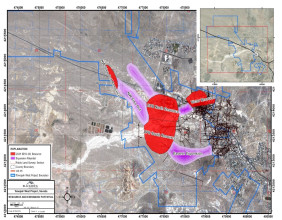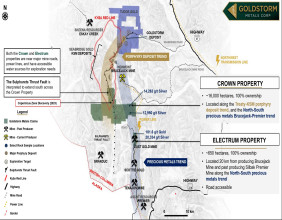Highlights:
George Weston operates within the consumer retailing sector
The company’s return metrics reflect an improvement in capital usage
Earnings reinvestment trends align with stronger operational outcomes
George Weston (TSX:WN), a player in the consumer retailing sector, is showing a noticeable upward trend in certain return measures. The sector itself is characterized by businesses that manage product distribution to consumers through various retail channels. Within this context, George Weston's performance metrics are reflecting shifts in operational dynamics.
One key measure gaining attention in this space is return on capital employed. This metric generally helps provide a view into how effectively a company is generating profit from its working capital. George Weston has been displaying an upward trajectory in this area, which could reflect underlying improvements in capital efficiency within its business operations.
In the broader landscape of consumer retailing, return measures like this are often monitored to assess operational productivity. The consistency of George Weston's return performance over time places its current momentum in a more meaningful context compared to earlier phases in its operational history.
Reinvestment of Earnings Aligned with Operational Strength
Another characteristic that stands out for George Weston is the reinvestment of retained earnings back into its core business activities. This reinvestment pattern has been consistent and appears to align with the gradual increase in the company’s return efficiency. This connection can be observed through the parallel growth in earnings and capital utilization.
In the consumer retailing sector, companies that manage to sustain reinvestment in a disciplined manner often reflect a stable internal capital structure. George Weston's approach in this regard aligns with practices seen among established firms that operate with a focus on long-term operational growth.
Moreover, when a company redirects a meaningful portion of earnings toward business expansion and efficiency, it may experience gains in productivity over time. George Weston appears to be demonstrating such a correlation between capital reinvestment and return-based metrics, reinforcing the structural cohesion within its financial practices.
Sustained Return Trends and Sector Positioning
When placed alongside peers in the consumer retailing space, George Weston's return performance reveals a steady pattern over multiple time periods. The consumer sector often rewards consistency in operational metrics, especially for companies managing large-scale retail chains and supply networks.
This consistency in return measures may contribute to how the company is perceived within the broader sector. Firms that manage to align return trends with operational decisions tend to exhibit signs of structural resilience. In George Weston's case, this alignment appears to be present in its ongoing business operations and capital allocation strategies.
The ability to maintain or improve return on capital without major disruptions a focus on internal discipline. Such a focus can play a vital role in a company’s operational stability, especially within a sector as dynamic as consumer retailing.
Management Approach to Capital Utilization
George Weston’s capital management strategy continues to reflect a methodical approach. The company has shown a tendency to deploy capital in areas that feed back into operational efficiency. This method of managing internal resources aligns with structured capital discipline seen in mature consumer retailing enterprises.
In the consumer retailing industry, capital utilization decisions are often driven by shifts in product demand, distribution strategy, and cost control. George Weston's operational activities reflect these sector-driven priorities, as observed through its consistent capital handling patterns.
Return Trends Aligned with Broader Business Strategy
George Weston's current return trends appear to align closely with its overarching business strategy. As a retail-focused enterprise, maintaining alignment between return metrics and core operations can be important in sustaining operational progress.
The company’s emphasis on reinvesting earnings and maintaining return consistency may indicate that operational growth is being supported by internal funding. This pattern, observed over an extended duration, can reflect a cohesive internal business model.
Within the consumer retailing environment, where volatility in demand and cost structures can affect performance, this alignment between financial indicators and business objectives often underpins broader stability in company performance. George Weston’s trajectory, viewed through this lens, mirrors structured management within the sector.




